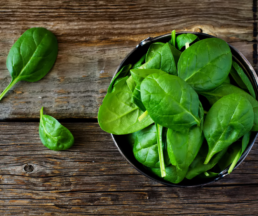Fuel Your Workout the Right Way
You have to put gas in your car to make it go, right? The same concept can be applied to your body and working out. Just like you can’t expect your car to get you from point A to point B without fuel, you can’t expect your body to get you through a workout if it’s not properly fueled. Here’s what you should be eating before, during and after a workout for optimal results.
Before Your Workout
Nutritionists agree that the best way to fuel your workout is to eat 1-4 grams of carbs per every 2.2 pounds of your weight about an hour before your workout. Some examples of a good pre-workout snack include a piece of whole-grain toast with peanut butter and banana slices, fruit and Greek yogurt, or a peanut butter and banana protein smoothie. You should also make sure you’re hydrated before you start your workout.
During Your Workout
If your workout lasts less than 45 minutes, you really only need to focus on replenishing the fluids you’re sweating out. If your workout is focused on endurance, like an extended run or lengthy lifting session, consume 30-60 grams of carbs per hour to fuel your workout.

After Your Workout
What you eat after your workout is just as important as what you eat before. Make sure to consume 15-25 grams of protein within one hour of finishing your workout to replenish the muscle glycogen you exerted during your sweat session. Continue to hydrate and consume protein to help keep muscle soreness at bay. If you had a particularly intense workout, consider drinking water or sports drinks enriched with electrolytes to fully replenish your body.
Food Safety Temperatures to Know
Danger zone: 41° – 135° F
This is the range where the most rapid bacteria growth occurs.
Safe zones
Cold foods: 40° F and below
Hot foods: 140° F and above

Nutritional Information (per serving)
| Total Calories | 193 |
| Total Fat | 7 g |
| Protein | 10 g |
| Carbohydrates | 28 g |
| Dietary Fiber | 10 g |
| Saturated Fat | 1 g |
| Sodium | 256 mg |
| Total Sugars | 8 g |
Source: USDA
Chickpeas and Spinach Saute
Ingredients
- 1 Tbsp. vegetable oil
- 1 yellow onion (chopped)
- 1 clove garlic (minced)
- 1 celery stalk (chopped)
- 1 carrot (chopped)
- 1 14.5-ounce can low-sodium diced tomatoes
- 1 16-ounce can low-sodium chickpeas (drained and rinsed with cold water)
- ¼ cup water
- 1 10-ounce package frozen spinach
- 1 tsp. fresh lemon juice
- ¼ tsp. crushed red pepper flakes
Preparations
- Put a skillet on the stove on medium-high heat. When the skillet is hot, add oil.
- Add onion, garlic, celery and carrot and cook about 15 minutes until the mixture is soft and the onions are lightly browned.
- Raise the heat to high, add the tomatoes, beans (white beans instead of chickpeas) and water, and cook for 5 minutes. Lower the heat to low and top the mixture with the spinach (don’t worry about stirring). Cover and cook until the spinach has thawed and heated throughout, about 10 minutes. Stir well.
- Add the lemon juice and red pepper flakes and stir thoroughly.
Makes: 4 servings
For more information and helpful links, please download our June 2019 Live Well, Work Well Newsletter.
This article is intended for informational purposes only and is not intended to be exhaustive, nor should any discussion or opinions be construed as professional advice. Readers should contact a health professional for appropriate advice.

